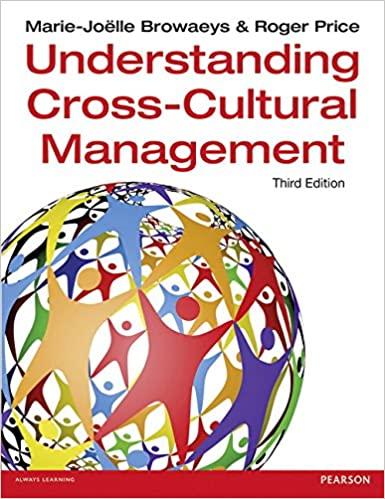Both Australia and New Zealand have taken a similar path in the development of policies regarding cultural
Question:
Both Australia and New Zealand have taken a similar path in the development of policies regarding cultural diversity.
Up until the mid-1960s, Australia’s concern was maintaining homogeneity through assimilation.
The vision of Australia as a racially white nation entailed not only the exclusion of non-European immigrants but also the forced assimilation of the indigenous population of Aborigines. The move towards integration came with a reduction of immigrants from Europe and a reduction in the barriers to immigration from other parts of the world. The new cultures present in Australian society had some influence on the dominant culture, but everyone was expected to adopt the integrated culture.
Ongoing cultural diversity was not encouraged. The notion of multiculturalism was gradually developed and now stands at the forefront of government policy. In 1999, The National Multicultural Advisory Council published a report entitled ‘Australian Multiculturalism for a new century: towards inclusiveness’ which emphasises the culturally diverse nature of Australian society and recognises that all sectors of the community will need to make some adjustments in order to absorb newly arrived people. These in turn will be required to accept Australian law, the democratic form of its government and English as the national language.
However, Australian multiculturalism recognises that many migrants and their children will choose to retain many of their customs and cultural traditions, some of which will be adopted by other Australians.
In New Zealand, the original inhabitants of the country – the Maori – had negotiated a treaty whereby they challenged the domination of the white settlers. From the late 1960s, there were many protests at the loss of Maori land and the Maori pushed for recognition of their own values and traditions. It was in the 1980s that the term ‘biculturalism appeared’ and the idea of that New Zealanders could exist in one nation but as two peoples each with their own language, education system, social services and businesses.
However, during the 1970s, the pattern of immigration started changing and this pushed the country towards multiculturalism. The following extract from Te Ara, The Encyclopaedia of New Zealand , published by Matanū Taonga, the New Zealand Ministry of Culture and Heritage, gives an overview of developments ( http://www.teara.govt.nz/en/the-new-zealanders/page-13 , accessed 14/2/13).
The multicultural idea
Many of these people, from a wide range of cultures, settled down, took up citizenship and brought up New Zealand-born children. This was a major challenge to the idea of who New Zealanders were. Initiated in Canada and picked up in the 1970s in Australia, the concept of multiculturalism quickly spread to New Zealand. It was proposed that people could be legitimate members of the New Zealand nation while retaining their own language, foods and traditions.
Non-British New Zealanders
As the numbers of non-British people increased, their cultural differences became more evident.
In South Auckland, Pacific Islanders congregated and evolved a distinctive New Zealand Pacific culture which was more than the sum of their different cultures. Large Asian communities who had originally been settled throughout the country came together in areas with their own schools and styles of housing.
Challenge for a new century
At the beginning of the 21st century it was not easy to define the New Zealander, nor even to explain the origin of many New Zealand characteristics. The character of the country’s people had been in part shaped by the physical environment – the outdoor climate, the proximity to beach and bush, the location in the South Pacific. No less important were the very different cultures brought to the country by waves of settlers – Maori who arrived some 700 years ago from the Pacific, the British and Irish who dominated the population for over a century from 1850, and more recent immigrants from Asia and the Pacific. All of these groups would have agreed that each were New Zealanders. All would have accepted that New Zealanders were no longer ‘Better Britons’. But the cultural meaning of the New Zealander had become uncertain. How it would evolve was one of the major issues for the new century.
Questions
1. What differences can you detect between the two countries in the path taken towards multiculturalism?
2. The extract from the New Zealand encyclopaedia refers to the cultural meaning of the New Zealander as having become uncertain. What do you think are the issues at play behind this statement?
Step by Step Answer:

Understanding Cross Cultural Management
ISBN: 9781292015897
3rd Edition
Authors: Marie Joelle Browaeys, Roger Price





